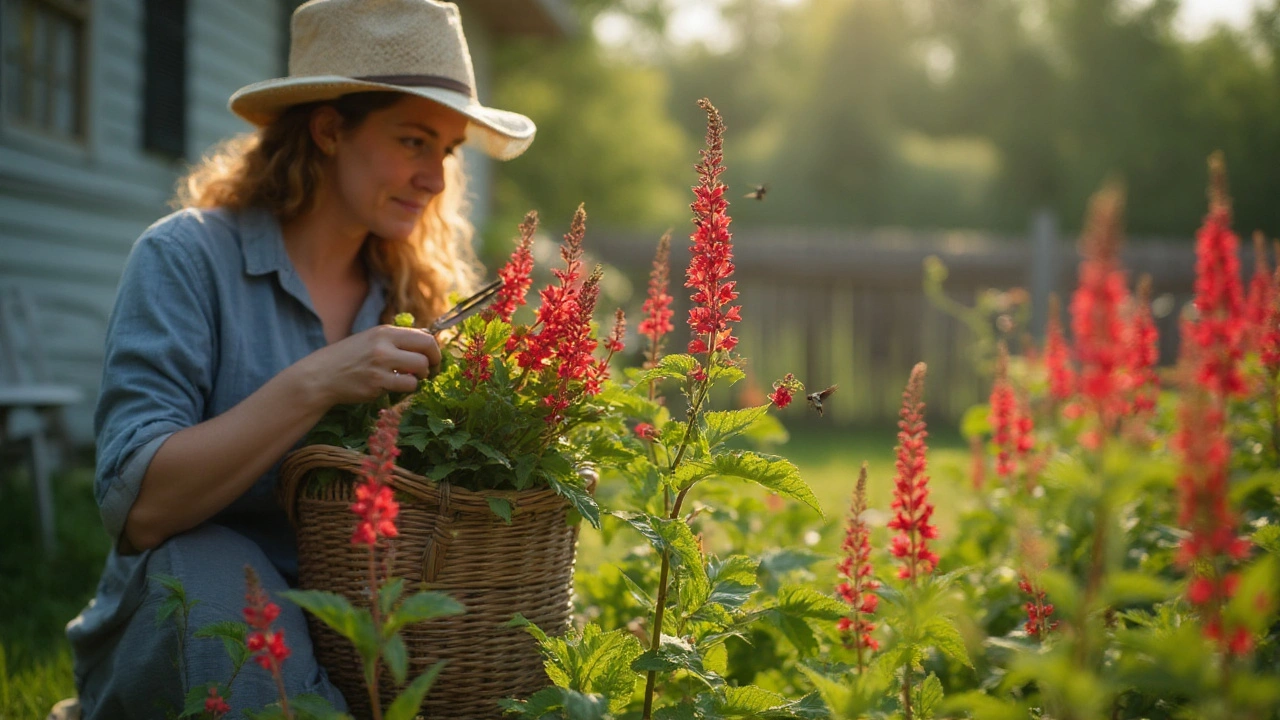Monarda Didyma: What It Is, How to Use It, and Growing Tips
Ever spotted a bright red flower buzzing with bees and wondered what it was? That’s Monarda didyma, better known as bee balm. It belongs to the mint family, smells like cinnamon, and has been used for centuries in traditional medicine.
Health Benefits and Simple Home Remedies
People use bee balm for a few practical reasons. The leaves and flowers can be steeped into a tea that helps soothe sore throats and eases coughs. A mild wash made from the crushed leaves works as a skin rinse for minor cuts or insect bites because of its natural antibacterial properties.
If you’re looking for a natural way to calm digestive upset, a cup of bee balm tea (about one teaspoon of dried herb per cup of hot water) taken after meals can help reduce gas and bloating. The herb also contains antioxidants that support overall wellness, but it’s not a replacement for medical treatment.
Growing Monarda Didyma in Your Garden
Bee balm is surprisingly easy to grow. Plant the seeds or young plants after the last frost when the soil is warm (around 60°F/15°C). Choose a spot with full sun to partial shade and well‑draining soil. Water regularly until the seedlings are established, then they can handle occasional dry spells.
Space each plant about 18–24 inches apart so air can flow through – this helps prevent powdery mildew, a common problem for mint family members. Pinch back new growth once the plants reach about 12 inches tall; this encourages bushier foliage and more flowers.
Harvest the leaves in early summer before the plant starts to flower. Cut stems with clean scissors, wash them, and either use fresh or dry them for later tea batches. The dried herb keeps well in an airtight container away from sunlight.
When you’re ready to share the benefits of Monarda didyma, remember a few safety notes: avoid using large amounts if you’re pregnant, nursing, or have known allergies to mint plants. Start with a small tea serving and see how your body reacts.
In short, bee balm is a versatile herb that adds color to gardens and offers simple home remedies for everyday aches. Whether you brew it as tea, apply it as a rinse, or just enjoy its buzzing beauty, Monarda didyma can fit nicely into a natural‑health routine.
Oswego Tea (Monarda didyma): Why It’s Poised to Lead Dietary Supplements in 2025
Curious about Oswego tea? Here’s the science, benefits, how to use it, safety tips, and what to buy-clear, practical, and evidence-backed for 2025.

